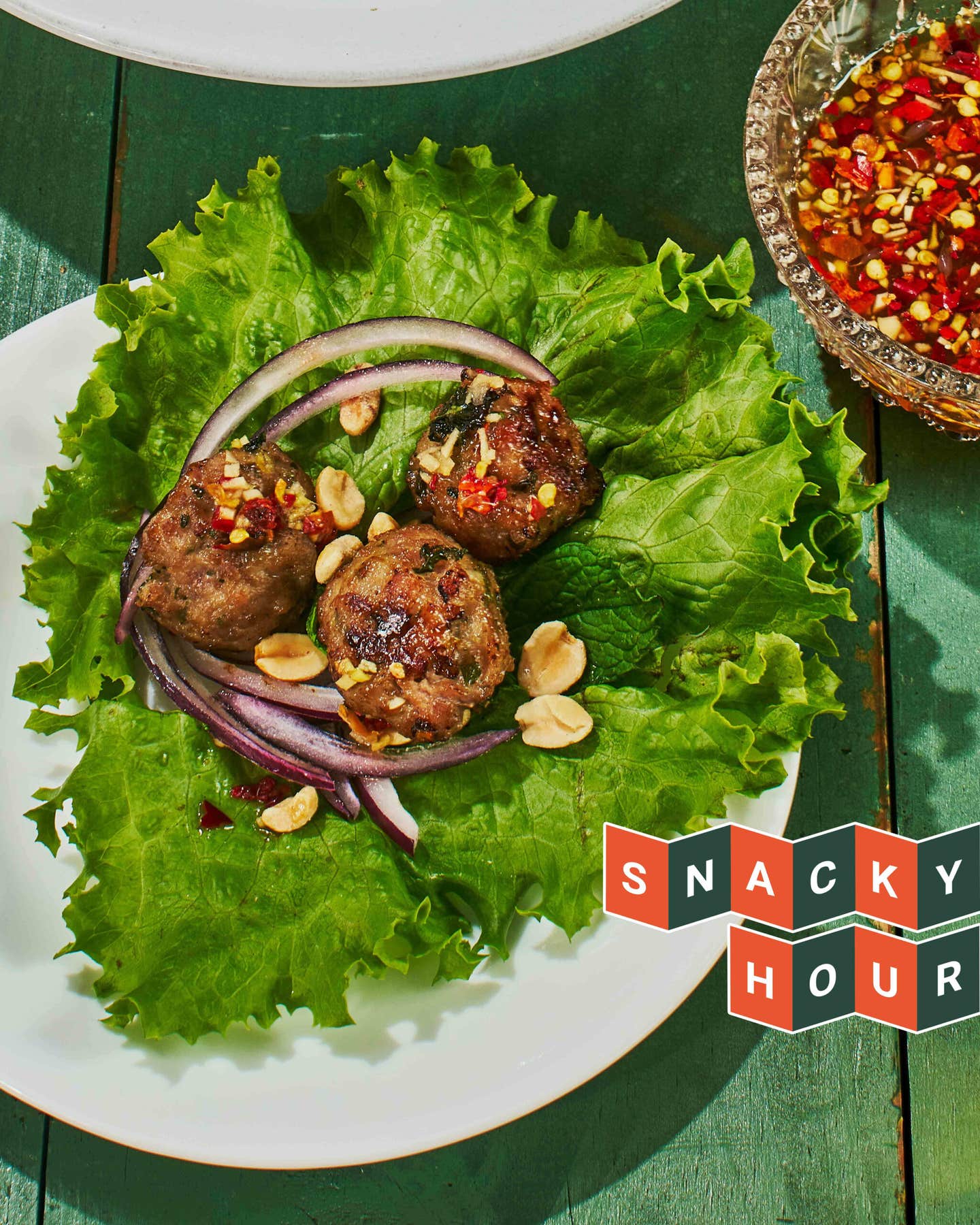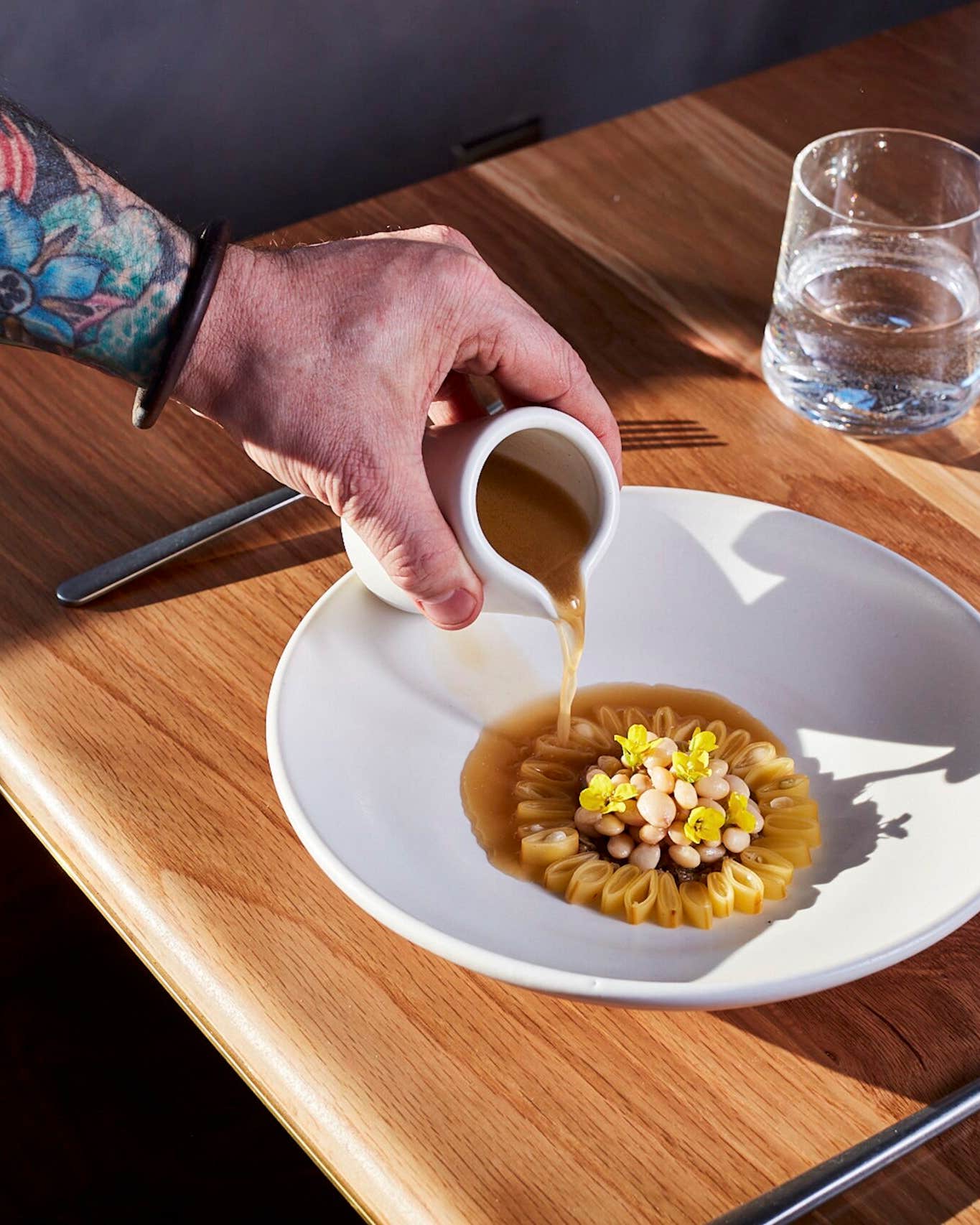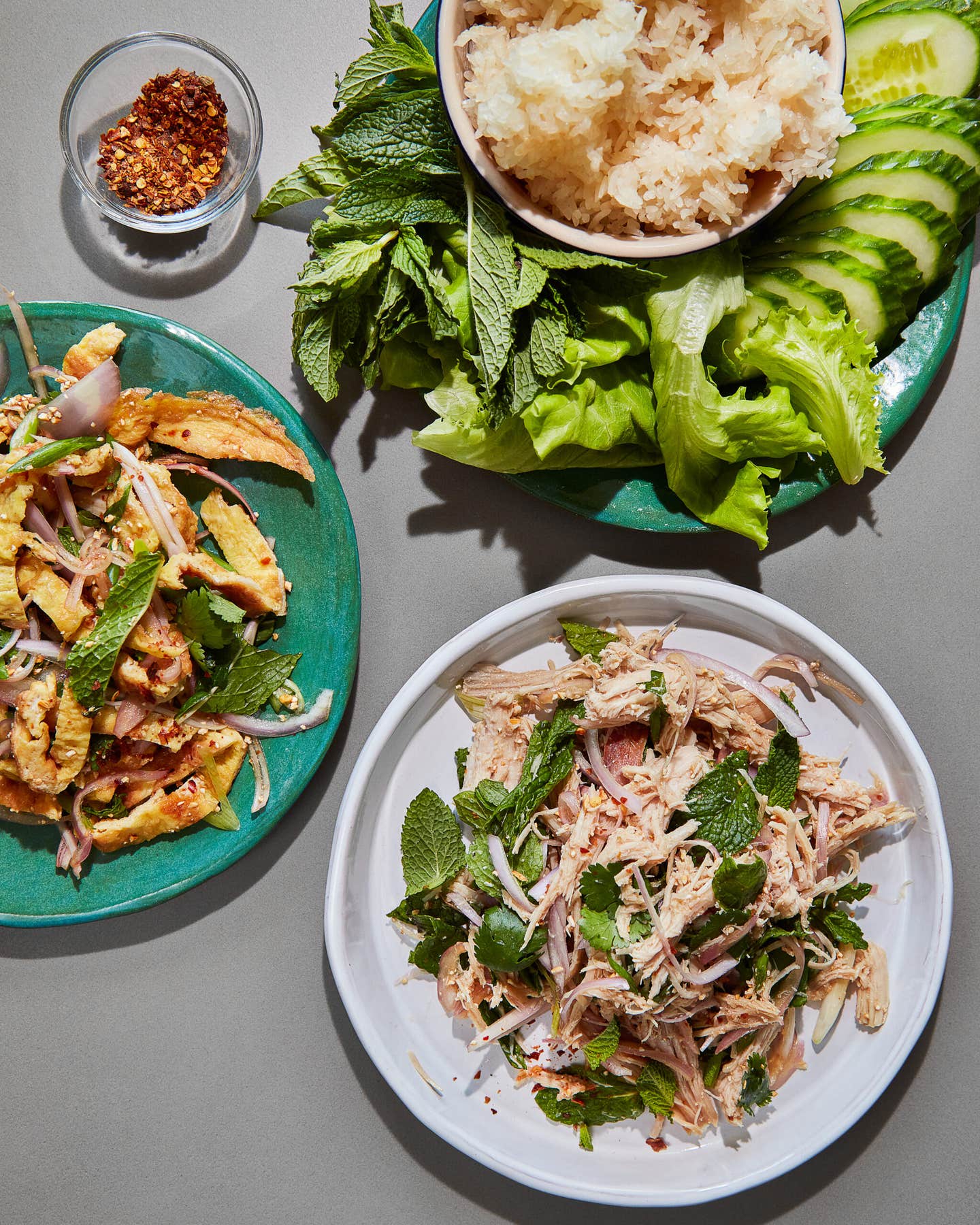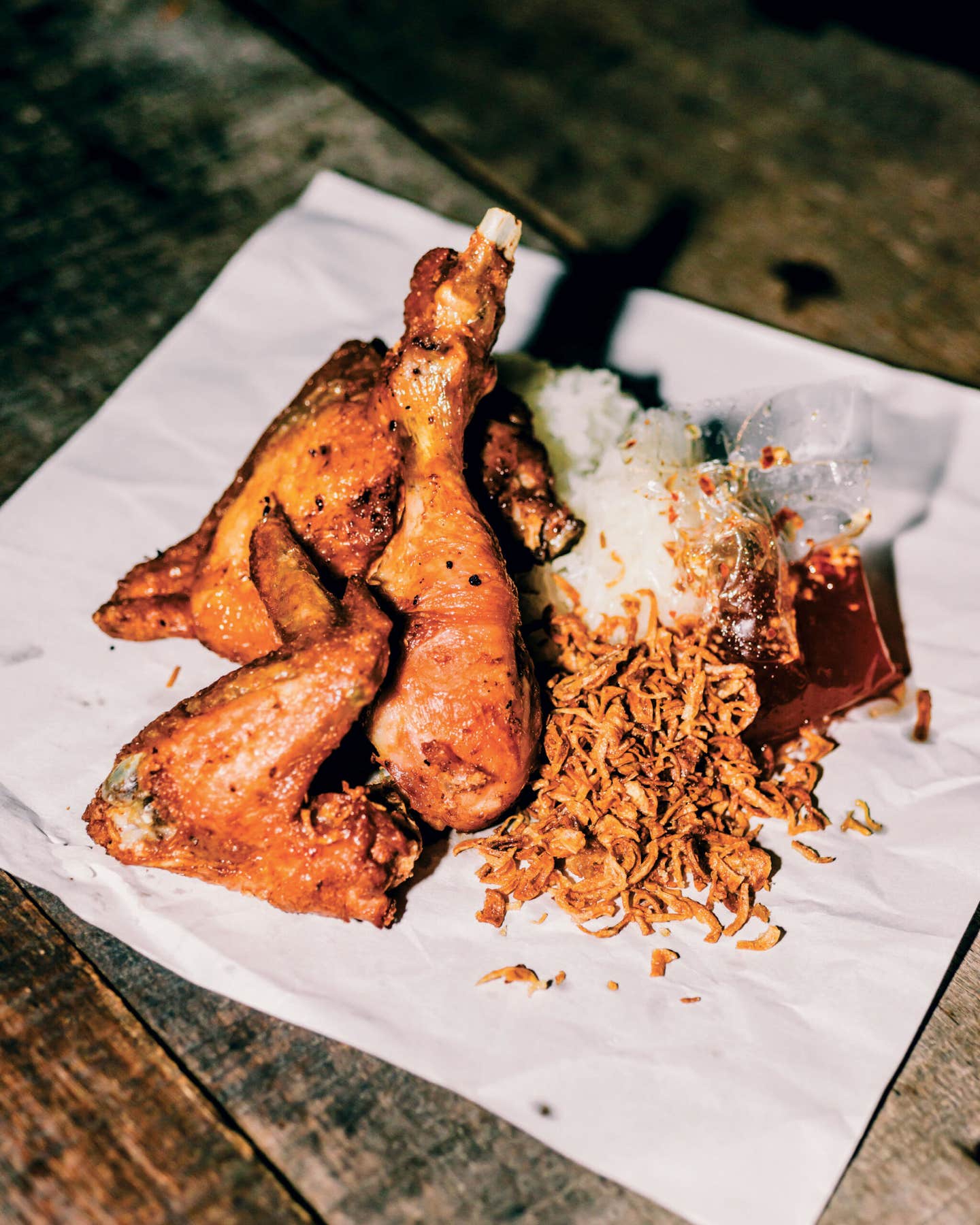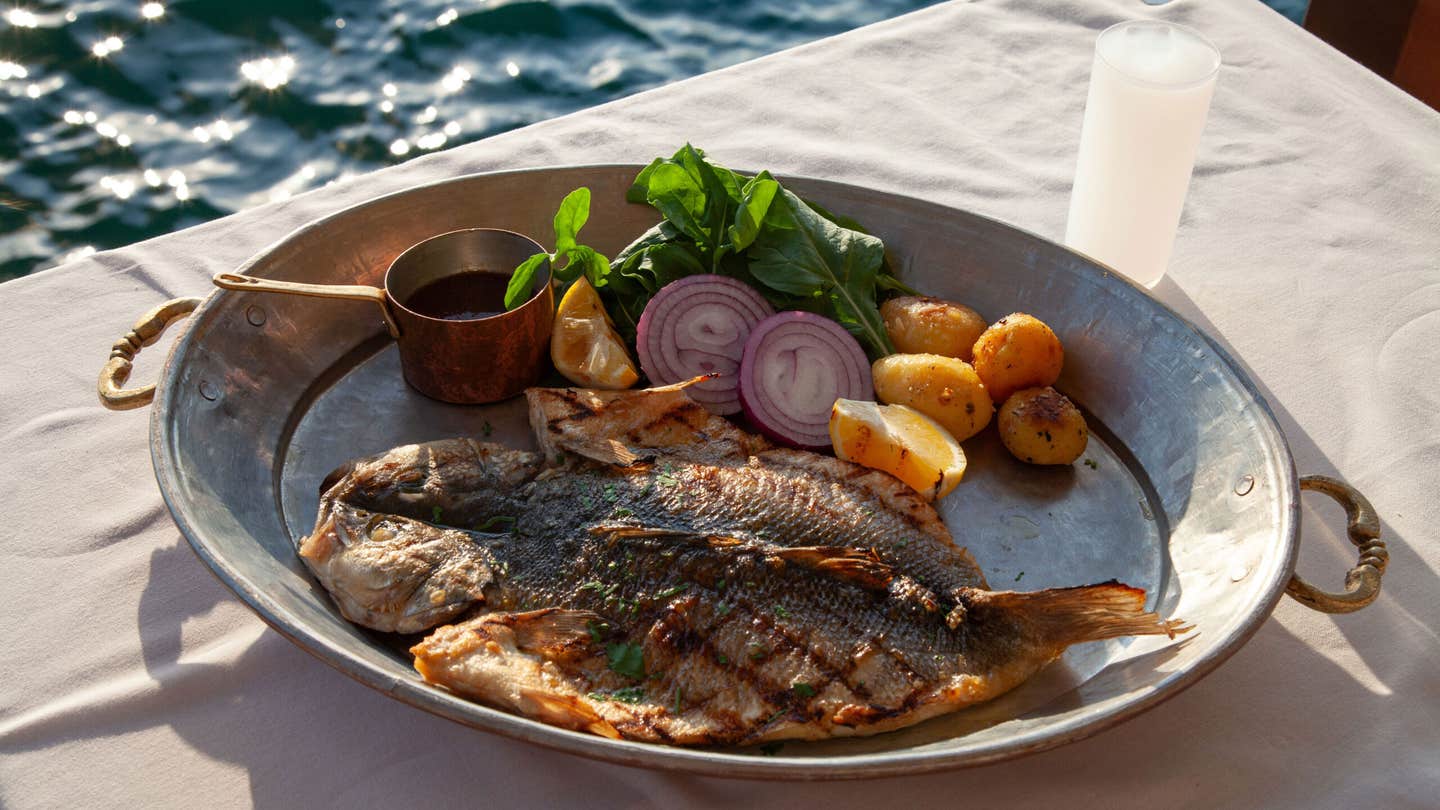Teleport Yourself to the Streets of Thailand With These Party Meatballs
Laab tod packs everything you love about the Southeast Asian ground meat salad into one festive bite.
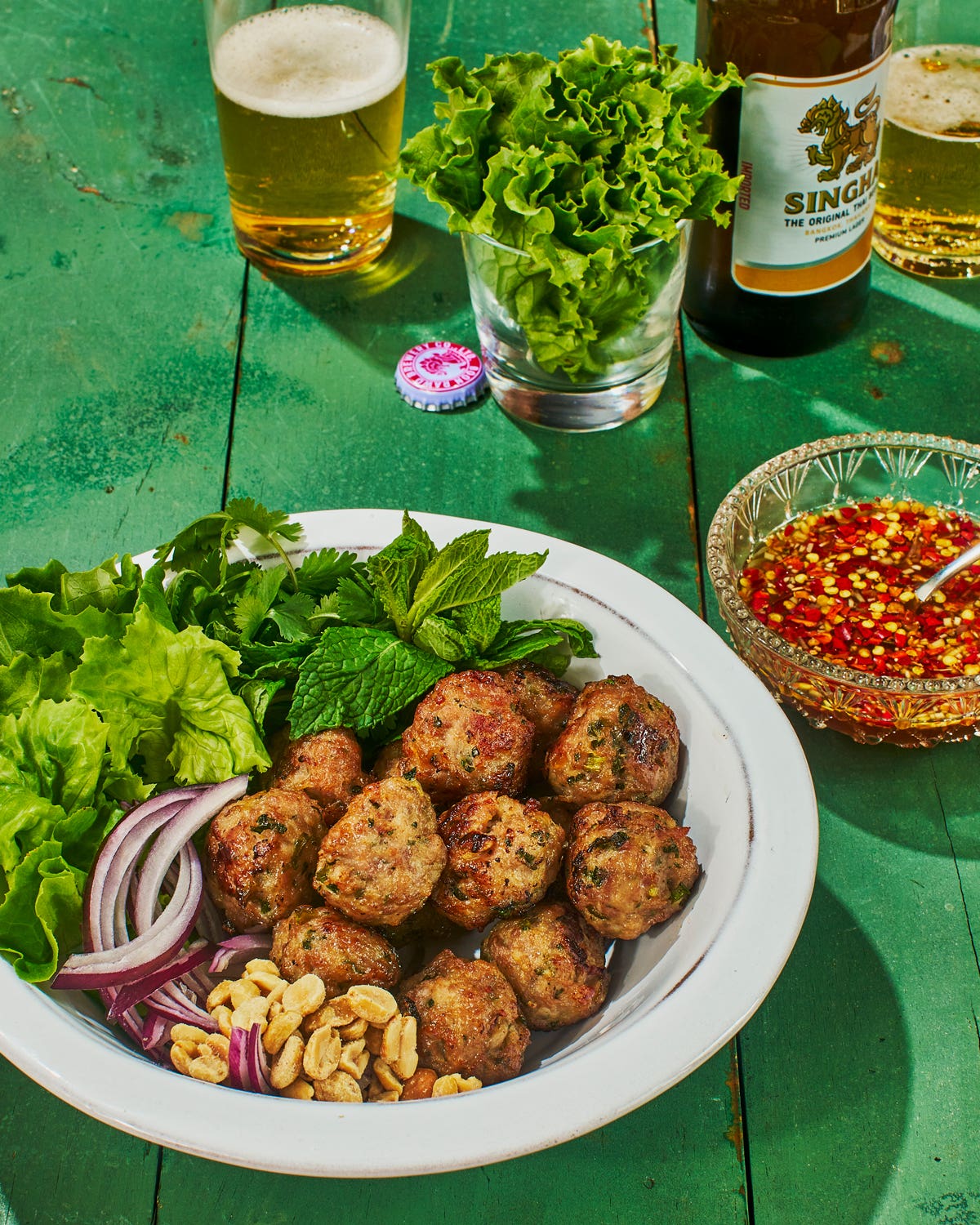
It’s always Snacky Hour somewhere. These are the best bites that fall outside the confines of breakfast, lunch, or dinner. Savory, salty, spicy, sweet, sour: everything’s fair game during Snacky Hour.
Meatballs have long enjoyed top billing in the world of party foods, doused in grape jelly or wallowing in barbecue or marinara sauce. Meatballs are the perfect vessel for different seasonings and flavorings, but these old-school preparations miss big opportunities for bold flavors. Today's food enthusiasts crave more, and I am here for it—with a whole bunch of my spicy Thai meatballs in tow.
I am the chef and owner of International Market in Nashville, Tennessee, where we serve my versions of the Thai food I grew up eating. Originally opened in 1975 by my parents, International Market introduced a world of flavors to a Southern community’s then-conservative palates. The restaurant was cafeteria-style with a large market filled with Asian ingredients; everyone from construction workers to students at the neighboring university stopped in at lunch for plates of egg rolls, curries, rice dishes, and noodles. Today the restaurant continues to celebrate its diverse group of customers both old and new, and strives to share the evolution of Thai food and dining culture. The steam table is still available at lunch, serving standbys like dumplings, green curry chicken, and pepper steak with rice, but there’s also a menu of dishes cooked to order that spotlight a mix of local farms and producers and give me room to experiment with Thai classics a little bit more.
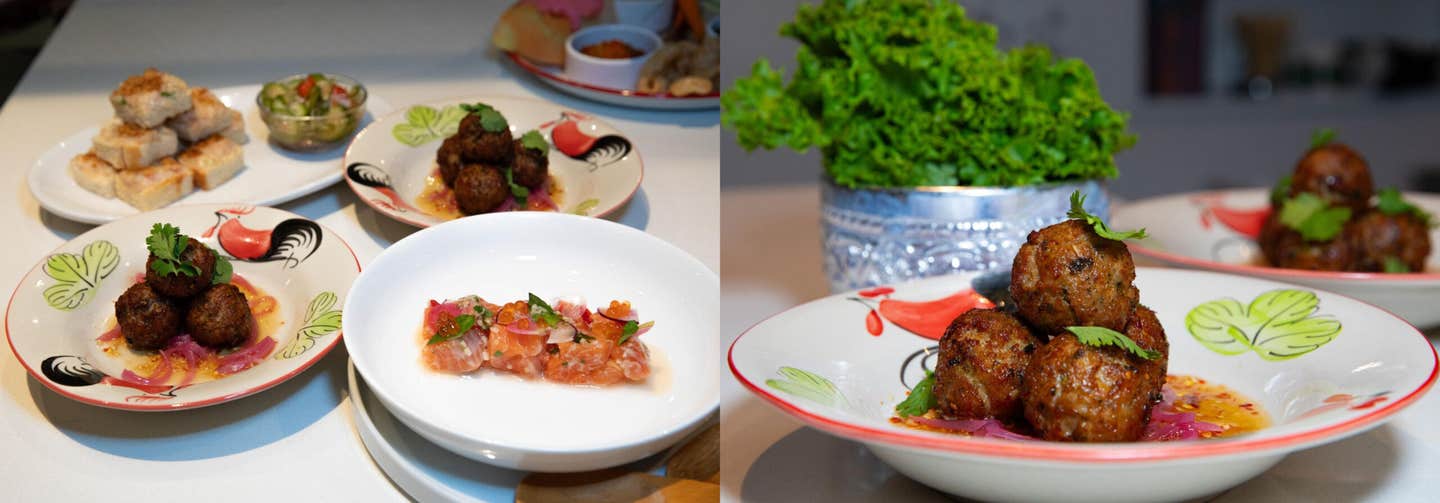
I also host a seasonal pop-up dinner series at the restaurant called “Khan Thoke Supper Club.” It’s a family-style experience celebrating my Thai and Burmese heritage. It allows me to cook for a captive audience of adventurous diners who are eager to sample things not commonly found in Westernized Thai restaurants, or even in the daily offerings at my establishment.
This style of dining is an ancient tradition in the northern part of Thailand, when honored guests were served food on rattan or carved trays called khan thoke. Growing up, I recall visiting Chiang Mai with my family and attending these lengthy, elaborate dinners in large banquet halls where floor pillows framed low, pedestaled rattan trays laden with a wide variety of savory snacks and stews. There was often entertainment, such as Thai classical music, and sometimes dancing among guests. At International Market, the ample khan thoke dishes are also served family style, and designed to balance one another, from salty and spicy to sweet and sour.
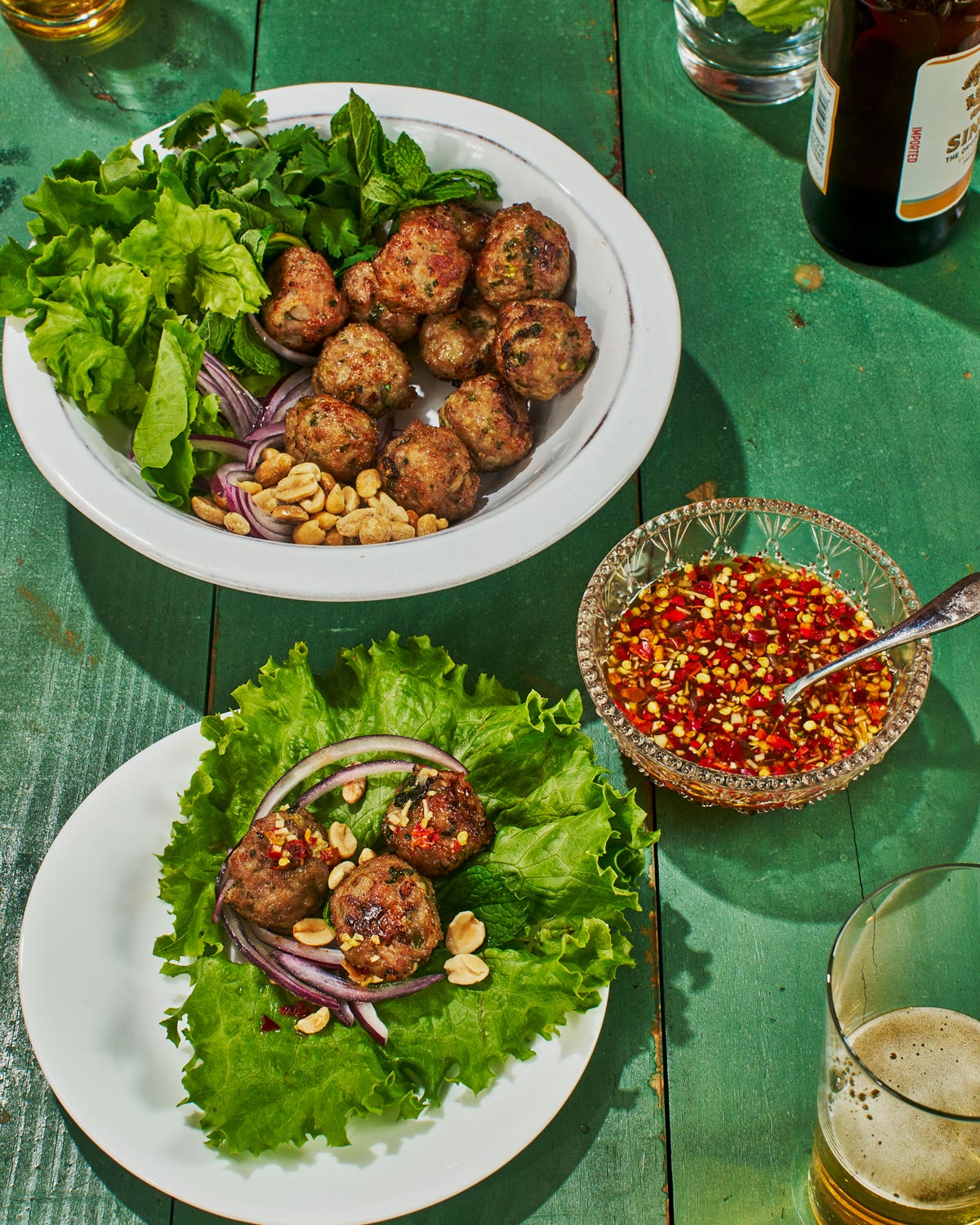
During a recent khan thoke at International Market, I wanted to offer my guests some of the classic Northern Thai foods I often crave, particularly an Isaan specialty called laab tod. These are meatballs based on a popular dish called laab (pronounced “lahb”, though it’s often spelled larb), a style of salad that originated in Laos, where it is considered the national dish. Traditionally, laab consists of finely chopped meat—often pork, chicken, or duck—and hits the signature Southeast Asian flavor notes of salty, sweet, sour, and spicy.
At the restaurant, I describe our version of laab as a “minced chicken citrus salad,” which is sometimes challenging for guests to process, since in Tennessee chicken salad typically consists of mayonnaise and celery. Not only is our chicken salad mayonnaise-free, but it also covers a completely different spectrum of flavors—umami-packed fish sauce, fiery dried chiles, sour lime, and pungent fresh herbs become part of a harmonious whole. An essential ingredient in any laab is khao khua, or toasted rice powder. Its nutty, smoky flavor has no substitute —and luckily, it’s easy to achieve at home. All you have to do is toast the grains in a dry pan until golden, then grind them into a coarse, sand-like texture using a mortar and pestle (or a spice grinder in a pinch). For Khan Toke Supper Club’s laab tod, we use pork, and roll all these ingredients up into festive little balls.
The trick to perfect laab tod is frying the meatballs in oil before finishing them in the oven, which ensures a perfectly tender interior and slightly crispy exterior. I like to serve my version with a spicy, pungent, and sweet dipping sauce called nam jim jaew, and crisp lettuce leaves for wrapping. The accouterments provide a refreshing contrast to the meatballs, cutting through the fried richness and making for a truly mouthwatering bite. But what excites me the most is the communal nature of laab tod. Whether you serve it as a casual snack or make it the centerpiece of your next dinner party, it’s a dish meant to be shared with friends and family, and a fun, interactive way to celebrate Thailand's rich street food culture in your own home.
Recipe
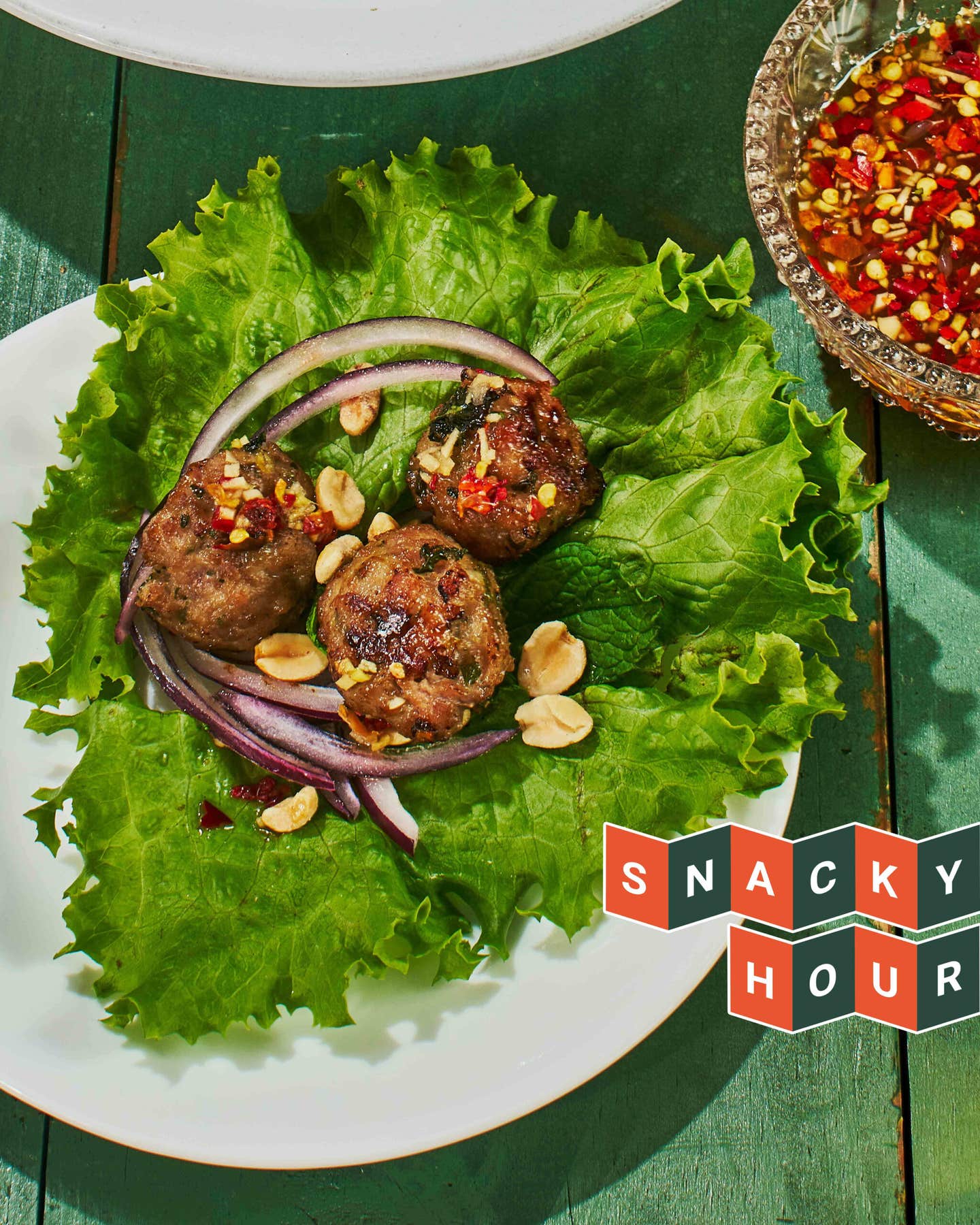
Keep Reading
Continue to Next Story
